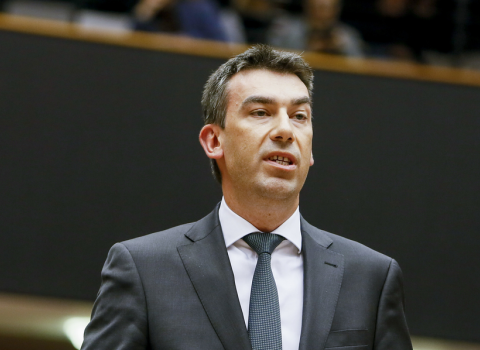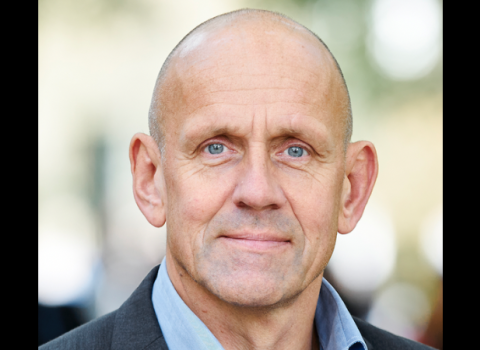‘Hope is strengthened’, says physicist Tommaso Calarco, one of the driving forces behind the EU’s €1B Quantum flagship. Start-ups are beginning ‘to sprout like mushrooms’

Isometric Quantum computing. Image: Bigstock
Almost a year after an onrush of public investment in quantum research in Europe, there is evidence that an ecosystem is starting to take shape. “Start-ups are beginning to sprout like mushrooms,” said Tommaso Calarco a theoretical physicist at the Helmholtz Centre in Jülich, Germany. “Every workshop I go to now, there’s a new one I haven’t seen before.”
Calarco is one of the leading forces behind the EU’s €1 billion Quantum Technologies Flagship that aims, among other objectives, to develop quantum computers that are exponentially more powerful than today’s supercomputers. The programme finally got off the ground last October.
“A year ago, it would have been difficult to pick out the promising companies,” said Calarco. “There was this concern that Europe was falling behind everyone else; that we would miss the global rush. But now, hope is strengthened. It’s no longer a flagship that’s emerging, but a quantum fleet.”
It is still early days in the race to develop full-scale quantum machines but, “You have one family of technologies driving all these different industries,” said Kai Bongs, professor of physics and astronomy at Birmingham University.
As principle investigator at the UK Quantum Technology Hub for Sensors and Timing, Bongs is overseeing the development of quantum gravity sensors or gravimeters that are predicted to be twice as sensitive and 10 times as fast as current equipment.
The hub is focusing on applications in geophysics, navigation, brain imaging and precision timing, “Each of which has the potential to create significant economic and societal benefit,” Bongs said. Links have been forged with industry to develop quantum sensors in a commercial environment.
The UK was an early mover in quantum technologies, launching a £270 million national programme in 2013. Today, the government announced a further £94 million funding for the second phase of research at quantum hubs centred at Birmingham, Glasgow, Oxford, and York universities. Birmingham’s share of the new funding is £23.5 million.
The hubs now involve collaborations between 26 universities and over 100 industry partners. The government says its funding has pulled in over £200 million of investment from the private sector.
“The quantum hype in investment is growing. European investors are now waking up to the possibilities,” said Bongs. The new technologies are beginning to attract venture capital.
One example is Quantonation, which founder Christophe Jurczak says is probably the first venture capital fund in Europe dedicated to quantum. The firm is currently investing in four early-stage “deep physics” companies, including KETS Quantum, a spin-out from Bristol University, and Pasqal, which describes itself as the first quantum computing company from France.
“I was living and working in Palo Alto and realised things were starting to move,” said Jurczak. “There were early signals that quantum was going to be big.” Jurczak, who has a PhD in quantum physics, returned to Paris and started the fund with two friends last year. “It was not too early, it was not yet too late,” he said. He has promoted the field around Paris. “We did meetups, hackathons, conferences,” he said.
Now, the French government is planning a quantum strategy, as part of the broader effort by president Emmanuel Macron to establish France as a tech nation.
“I’d like to see more money for quantum,” said Jurczak. He also wants to see more training programmes. The labour pool in quantum is small, creating competition for qualified engineers and researchers. “There is a shortage of manpower everywhere. National governments must start working on training and creating new master’s degrees. You also still need a lot of money for fundamental research,” he said.
The French plan is taking shape six years after the UK launched its quantum programme. “The UK got out there early. It was a bit ahead of the curve,” Jurczak says.
EU and Quantum
Calarco was co-author in 2016 of the ‘Quantum Manifesto’, which was the early impetus behind the EU flagship. Now he is proposing a plan to officials in Brussels for additional hundreds of millions of euro investment into quantum infrastructure. “We’re throwing the idea out there,” he said. “It could be wishful thinking or it could become more concrete.”
Efforts to get the Quantum flagship going were painstaking, but Jurczak says he is happy that policymakers are starting to focus more on disruptive innovation. However, he questions the approach in Brussels. “If it’s disruptive innovation you’re funding, you shouldn’t be asking to see performance indicators from companies. This is long-term and pre-revenue. I’d like the [European] Commission to really understand this. I’m just a bit worried there may be a disconnect between words and fact,” he says.
Meanwhile in Birmingham, Bongs is working with 73 companies on 109 sensing projects with applications in fields as diverse as civil engineering and medical scanning.
As one example, quantum sensors could greatly increase the ability of engineers and surveyors see below ground, aiding the execution of major construction projects, he says. “When you’re building new roads or railways, the classical method is to drill bore holes to look for old mining shafts, or sink holes or tunnels. It’s timely and costly,” Bongs said.
Undetectable underground hazards can cause mayhem. “The condition of the underground area is the largest single risk in infrastructure projects. Overruns and delays can cost about half a per cent of GDP to economies,” he said.
New quantum sensors are also being developed to compete with magnetic resonance imaging. “We have already shown you can get higher resolutions of the brain,” said Bongs.
The Glasgow-led quantum hub, which looks at enhanced imaging, was awarded an additional £28 million in the new round of funding. The hub’s research showcases include a digital camera that captures photons 10,000 times faster than conventional cameras, and cameras capable of looking around corners and seeing clearly through smoke.
To date, the Glasgow hub has incubated three start-ups: QLM, which has developed a drone mounted sensor capable of remotely detecting and quantifying minute methane leaks; Raycal, which provides consulting services in quantum technologies; and Sequestim, which is working on terahertz imaging technology for security screening applications.
Brexit uncertainty
Scientists in the UK were involved in the early preparations for the EU flagship and UK universities are involved in a number of the projects. The country’s involvement after Brexit remains in some doubt, however.
To ensure his own future in the UK after Brexit, Bongs, who is from Germany, became a dual-citizen. “That was my own little precaution,” he said.
Some companies are not waiting to see how Brexit plays out. It was reported last month that a group of leading quantum researchers left the UK for Silicon Valley to found a start-up, PsiQ, and raise more capital.
Jurczak predicts the majority of quantum hardware companies will stay and grow in Europe but sees a fight to keep software experts. “Hardware will stay quite close to the labs they came out of,” he said. “Software will be something else.”
A loss of top researchers is a setback for Europe, but not one that reverses quantum’s climb.
Some talent migration will not affect the UK’s ability to develop industrial champions in the sector, says Bongs. “I’m not so worried. There’s no big multinationals that are focused solely on sensors, so the risk of people being pulled away by giants is mediated.”



 A unique international forum for public research organisations and companies to connect their external engagement with strategic interests around their R&D system.
A unique international forum for public research organisations and companies to connect their external engagement with strategic interests around their R&D system.